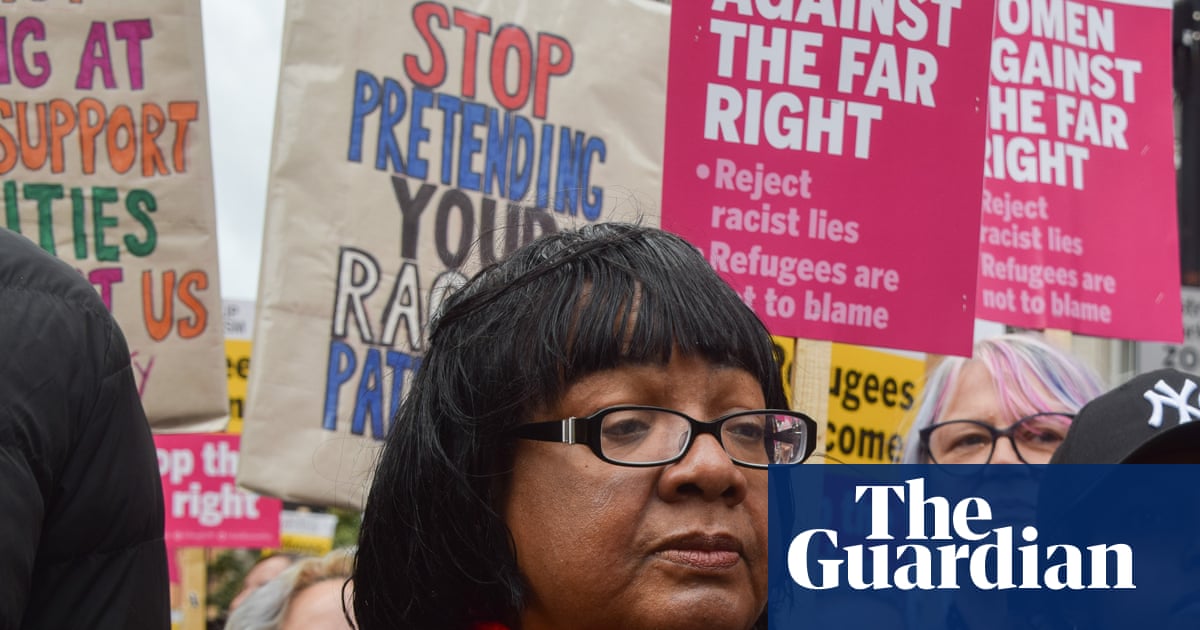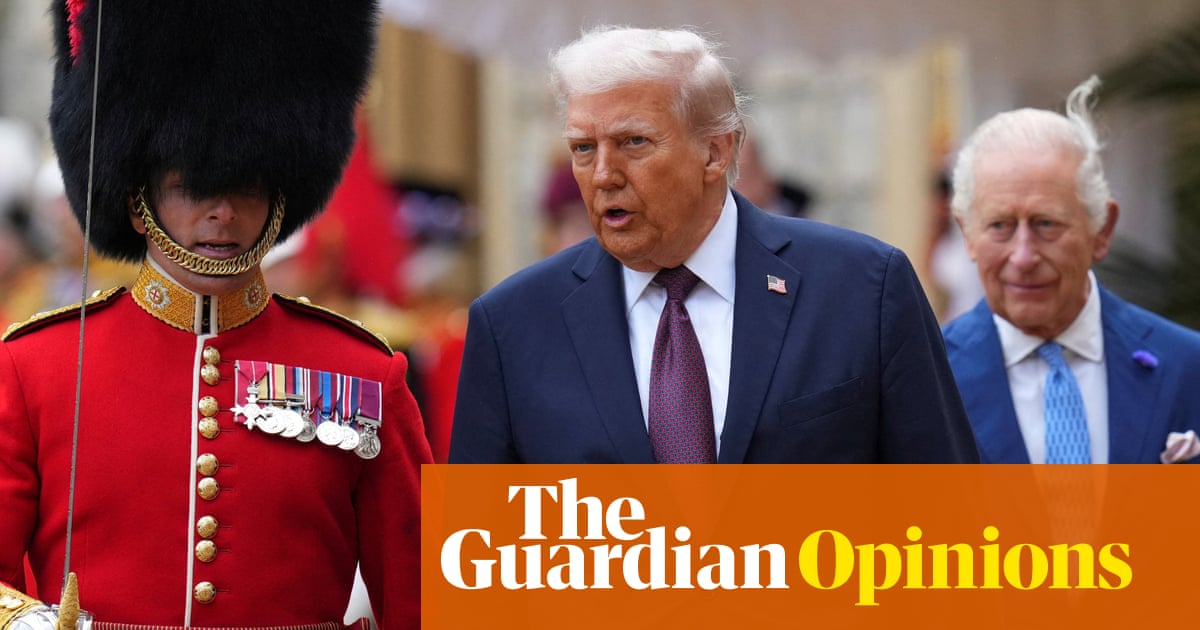This was the moment that Donald Trump was waiting for. A Democratic city, Los Angeles. A Democratic state, California. His most popular issue, immigration. And protests where occasional violence could be spotlighted endlessly on social media. What better time to summon the troops and burnish the president’s tough-guy image.
But Trump should be careful what he wishes for. The spectacle of needlessly calling in 4,000 national guard troops and 700 Marines may be red meat for his Maga base, but for most everyone else it is a bright warning sign of Trump’s autocratic tendencies. Rather than quell the protests, he is provoking more, not only in LA but in at least two dozen cities across the US. Even if this is not yet the mass mobilization that such repression has sparked in other countries, it is making Trump’s true colors clear.
Surrounded by sycophants, living in an echo chamber, Trump seems oblivious to his overreaching. Yes, immigration has been his strong suit, but the issue is more complex than he imagines. Many Americans were disturbed by the large number of immigrants streaming across the southern border, but there is an enormous difference between bolstering border enforcement and raiding immigrant neighborhoods and workplaces.
Trump officials want Immigration and Customs Enforcement (Ice) agents to deport 3,000 people a day. But with Trump having largely stopped the border influx, the easy path to mass deportations – returning people who just arrived – is largely closed. His administration thus has pressured Ice agents to detain undocumented immigrants throughout the country. And because it is time-consuming to target one by one people who have a criminal record or a pending deportation order – the less controversial cases – Ice is turning to random raids on places where undocumented immigrants are assumed to congregate.
An estimated 14 million undocumented immigrants live in the US. A 2017 study estimated that two-thirds of such immigrants at the time had been in the US a decade or more. These people typically work jobs, pay taxes and build families, frequently with US-citizen spouses and children. They are Americans in all but legal status. Deporting them rips holes in households and communities.
If not for the polarized politics of Washington, these longtime residents would have long ago been given a path to regularize their immigration status. If we decline to prosecute most crimes after five years, in part out of recognition that at some point people should be able to move on with their lives despite what they have done in the past, why not have a similar statute of limitations for deportations?
But that is not the world we live in, even if the impulse behind it is broadly shared. Trump’s workplace and community raids are bumping up against public recognition that over time, the equities of immigration shift, that the manner of immigrants’ entry is overcome by the unfairness of disrupting the lives they have built. Even some Republican lawmakers are now warning that Trump has gone too far.
It is no wonder that these raids have sparked protests. And Trump has responded in the lawless way that is his wont. There was nothing extraordinary about the initial LA protests that local law enforcement authorities could not have handled on their own. California’s governor, Gavin Newsom, accused Trump of choosing “theatrics over public safety”. The national guard, not to mention the marines, were not needed or wanted. Yet Trump, dying to flex his muscles, mobilized them anyway.
Not since 1965 has a US president deployed the national guard without a request from the state’s governor. Then, Lyndon Johnson ordered it to protect civil-rights marchers in Alabama from a segregationist governor, George Wallace. Now, in a sad parody of that historic moment, Trump called on it to trample people’s right to protest his cruel immigration policies.
As for the marines, US law prohibits deploying them or other troops for policing purposes absent an insurrection. Trump calls the protesters “insurrectionists”, his defense secretary claims a “rebellion”, but those assertions are farcical. Instead, Trump is invoking yet another fake “emergency” to justify handing himself extraordinary powers.
The ban on policing by the military is founded on good sense. Troops are trained for war, where they can shoot to kill opposing combatants. But police can use lethal force only as a last resort to meet an imminent lethal threat. Asking troops to police is an invitation to brutality. And Trump goads them on by dehumanizing the protesters as “animals” and “a foreign enemy”.
Having broken the taboo against deploying troops for law enforcement, there is every reason to fear that Trump will continue as protests inevitably spread. The next occasion may be this coming Saturday, when he has scheduled a big military parade in Washington to mark the 250th anniversary of the US army – which also falls on Trump’s 79th birthday. Army officials worry that the parade “could make it appear as if the military is celebrating a crackdown on Americans”. That is undoubtedly what Trump wants.
To make matters worse, Trump is already threatening people who might demonstrate against his military extravaganza: “For those people that want to protest, they’re going to be met with very big force.” Even a peaceful demonstration? What about the first amendment? For Trump in his flout-the-constitution mode, those are irrelevant details.
In his first term, the “grown-ups in the room” often were able to restrain Trump’s most dangerous tendencies. This time around, only die-hard loyalists are left. Pete Hegseth, the defense secretary, defended the military deployment in LA. It is hard to imagine him resisting whatever outrage Trump might next try to commit.
Trump’s military posturing is another step in the autocrat’s playbook. Just as he has attacked judges, lawyers, journalists, universities, elected officials and other potential checks on his power, so he is now taking a stab at the public. Protests are an important way to rein in abusive leaders. In many countries, they have proved decisive. Trump’s military threats aim to limit that possibility.
Aspirations aside, Trump has not yet managed to build an autocracy. It is important not to exaggerate, because that can demoralize the resistance and obscure how much difference it is making. But it is essential that we keep in mind not only the wrongfulness of Trump’s conduct in LA but also the broader plan of which it is a part.
The danger is not the protesters. The danger is Trump.
-
Kenneth Roth, former executive director of Human Rights Watch, is a visiting professor at Princeton’s School of Public and International Affairs. His book, Righting Wrongs: Three Decades on the Front Lines Battling Abusive Governments, was published by Knopf and Allen Lane in February

 3 months ago
101
3 months ago
101

















































